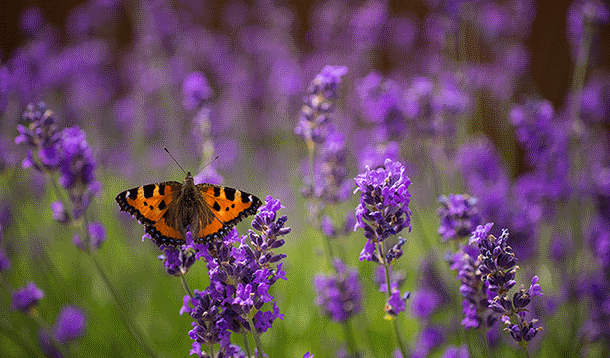
I come from a family of very keen gardeners, so you'd think my yard would be amongst the nicest ones on the block. This is actually not the case...yet. I’m in the process of revamping my gardens to make them more beautiful and environmentally-friendly. One of my first steps was to get my green thumbs on wildflower seeds as a quick fix for some of the bare patches.
For a quick fix, I planted wildflower seeds amongst my beloved herbs and now, this section of my garden is be a thriving, ‘bee-utiful’ paradise that is both abloom and abuzz. There are many other ways you can entice bees and butterflies into your yard, including adding pollinator-friendly perennial plants to your garden throughout the growing season - unlike annuals, you can plant perennials anytime. They may be past their blooming time this year, but they'll establish great roots and be all set to entice those pollinators next year. Here are five of my favourite bee-friendly perennials that are beautiful and also happen to be edible:
Bee Balm leaves have a mild citrus flavour while the vibrant flowers (typically red but sometimes pink, purple, or white) have a minty taste. You can use both the leaves and blossoms in fruit salads or steep the leaves to make a tea reminiscent of Earl Grey.

Cornflower is also called bachelor’s button, these compact blossoms have a slightly sweet to spicy, clove-like flavor. While they’re great as garnishes, they're spectacular when frozen into ice cubes or an ice ring.

This versatile plant can be consumed in a variety of ways. In the spring, harvest the tender flower stalk shoots when they're less than eight inches tall, then slice and use in stir-fries. When the flower buds develop, pick while still green and firm and prepare by steaming or stir-frying. The unopened buds also make great pickles. When daylilies are blooming, stuff, and cook unopened whole flowers as you would with zucchini blossoms. Sprinkle the sweet-tasting, large petals in salads, or use the whole opened flowers to decorate a cake or platter of cut fruit.

The delicate purple flowers of the lavender plant can be used in baking and cocktails. I like to use lavender to flavour various vinegars for salad dressings.

These miniature members of the carnation family have a delicate clove-like or nutmeg scent. Use the petals to add a pop of colour to salads.


![]() RELATED: Impress Your Kids With These Interesting Facts About Bees
RELATED: Impress Your Kids With These Interesting Facts About Bees